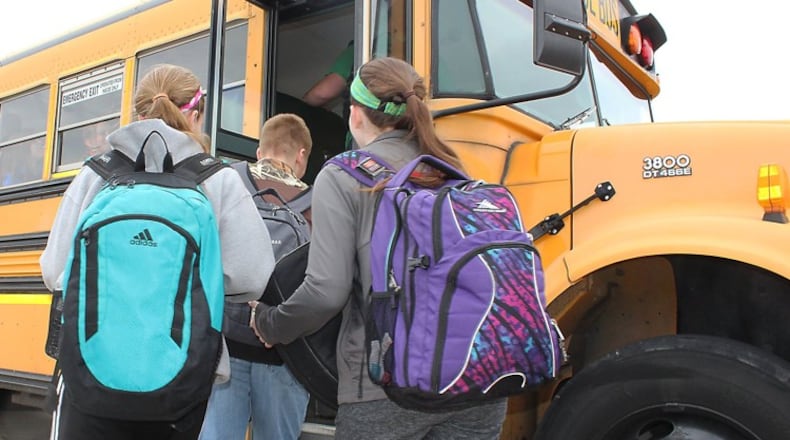The 2022 Kids Count Data Book noted “a pandemic atop a pandemic” in reference to children’s and families’ mental health in 2020 and how they were negatively impacted by the COVID-19 pandemic. Factors that affected children included schools, child care facilities, libraries, and recreational facilities closing, along with youth sports and other activities getting canceled. Approximately 33% of parents reported their children “acting fussier and more defiant” after a month into the pandemic, according to a Rapid Assessment of Pandemic Impact on Development (RAPID) survey. The survey also noted 26% of parents said their children appeared more anxious.
“It’s just telling this story of how children have fared during the pandemic,” Eckhart said.
The National Survey of Children’s Health also showed the number of children struggling with anxiety or depression grew from 9% to 12%, or 5.8 million kids to 7.3 million in the U.S. between 2016 and 2020. In Ohio, the percentage of children between the ages of 3 and 17 who had anxiety or depression grew from 9.2% to 13.1%.
Ohio falls behind other states in other rankings, as well, getting placed 27th in economic well-being, 28th in education, 32nd in health, and 33rd in family and community.
Economic rankings looked at children living in poverty between 2016 and 2020, which was approximately 487,000 or 19% of kids in Ohio, along with additional factors. In Ohio, approximately 718,000 or 28% of children had parents without secure employment; 625,000 or 24% of children lived in households with a high housing cost burden; and approximately 37,000 or 6% of teens were working and not in school.
“We have a strong economy, we have a lot of talent, and there’s really no reason why we should be lagging,” Eckhart said.
Educational factors looked at factors like early childhood education, reading and math proficiency, and students graduating on time. In Ohio, between 2016-2020, 56% of children ages 3 and 4 were not in preschool. In Ohio in 2019, 64% of fourth graders were not proficient in reading and 62% of eighth graders were not proficient in math. From 2018 to 2019, 18% of high school students in Ohio did not graduate on time.
Eckhart noted the Children’s Defense Fund Ohio, which also releases its own Ohio data book found at cdfohio.org, noted they saw a 45% increase in chronic absenteeism in 2021 in Ohio.
Health indicators in the national Kids Count Data Book looked at birth weight, insurance coverage, deaths, and obesity. In 2020, there were approximately 10,957 or 8.5% of of babies who were born with a low birth weight in Ohio. Between 2016 and 2020, there were 122,000 or 4% of children without health insurance. In 2020, there were 763 child and teen deaths per 100,000 people in Ohio. Approximately 38% of children between the ages of 10 and 17 were overweight or obese between 2019-2020.
Family and community indicators looked at the households children were living in between 2016 and 2020. In Ohio, there were approximately 898,000 or 37% of children living in single-parent families; 229,000 or 9% of children lived in families where the head of the household lacked a high school diploma; and 282,000 or 11% of children lived in high-poverty areas.
Eckhart said people could impact children by making sure school is a place where they can get basic needs met, such as continuing providing breakfast and lunches to children regardless of whether or not they can pay.
“During the public health emergency, all school meals were provided for free,” Eckhart said. She said that’s not going to be a guarantee for kids after the federal public health emergency for COVID-19 ends, but she encouraged people to support free breakfasts and lunches for children.
“As we look at the American Rescue Plan Act dollars that Ohio has not decided what to do with, it reaches $2 billion,” Eckhart said. She advocated for those additional ARPA funds to go toward investing in children, asking people to consider “how can we be strategic about the relief money and how can we use it most effectively.”
With the mental health crisis, Eckhart said having mental health services available in schools is another way to reach those kids in need. In addition to school counselors, school resiliency coordinators are offered at some local schools, like Dayton Public Schools, through partnerships with Dayton Children’s Hospital to help coordinate with students, families, and schools if a child needs long-term support.
Dayton Children’s On Our Sleeves initiative, which is a movement promoting children’s mental health, also offers additional resources for educators, families, and community members. More information on those resources can be found at www.childrensdayton.org/onoursleeves.
To view the full 2022 Kids Count Data Book and see how other states ranked, visit www.aecf.org.
About the Author

